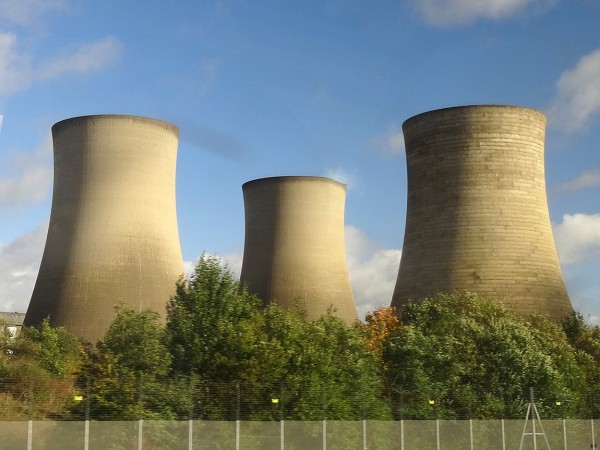
As Elizabeth noted in Fuelling the Political Playing Field, there has been much debate recently about energy prices in the UK. Four of the ‘Big Six’ energy companies have now announced price rises. They average 9.1% – way above the rate of consumer price inflation and even further above the average rate of wage increases. What is more, they are considerably above the rate of increase in wholesale energy prices, which, according to Ofgem, have risen by just 1.7% in the past year.
The bosses of the energy companies have appeared before the House of Commons Energy and Climate Change Select Committee to answer for their large price increases. The energy companies claim that the increases are necessary to cover not only rising wholesale prices, but also green levies by the government and ‘network charges’ for investments in infrastructure. 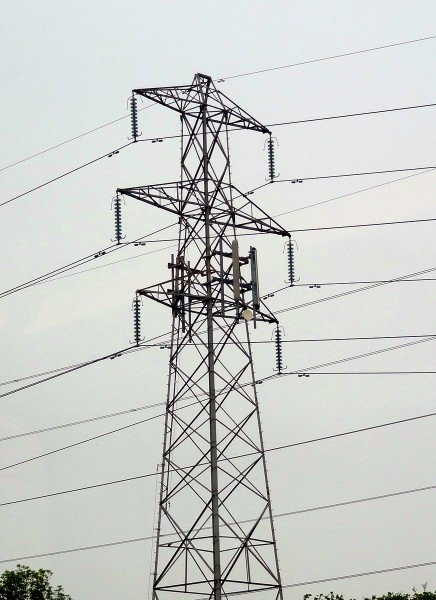 However, it is hard to see how, even taking into account all three of these possible sources of cost increases, the scale of price increases can be justified.
However, it is hard to see how, even taking into account all three of these possible sources of cost increases, the scale of price increases can be justified.
Another possible explanation for the price hikes is that they are partly the result of a system of transfer pricing (see). The energy industry is vertically integrated. Energy companies are not only retailers to customers, but also generators of electricity and wholesale shippers of gas. It is possible that, by the producing/shipping arms of these companies charging higher prices to their retailing arms, the retailers’ costs do indeed go up more than the wholesale market cost. The result, however, is higher profits for the producing arms of these businesses. In other words, a higher transfer price allows profits to be diverted from each company’s retailing arm to its producing arm.
 This is an argument for making the wholesale market more competitive and for stopping the by-passing of this market by producing arms of companies selling directly to their retailing arms. What the companies are being accused of is an abuse of market power and possibly of colluding with each other, at least tacitly, to support the continuation of such a practice.
This is an argument for making the wholesale market more competitive and for stopping the by-passing of this market by producing arms of companies selling directly to their retailing arms. What the companies are being accused of is an abuse of market power and possibly of colluding with each other, at least tacitly, to support the continuation of such a practice.
So is the answer a price freeze, as proposed by the Labour Party? Is it an investigation of the energy market by the Competition Commission? Or is it, at least as a first step, much more openness by the energy companies and transparency about their pricing practices? Or is it to encourage consumers to switch between energy companies, including the smaller ones, which at present account for less than 5% of energy supply? The videos, podcasts and articles consider these issues.
Webcasts and Podcasts
 Energy bosses blame high bills on wholesale prices Channel 4 News, Gary Gibbon (29/10/13)
Energy bosses blame high bills on wholesale prices Channel 4 News, Gary Gibbon (29/10/13)
 Why are energy bosses being questioned? BBC News, Stephanie McGovern (29/10/13)
Why are energy bosses being questioned? BBC News, Stephanie McGovern (29/10/13)
 Key questions Big Six energy companies must answer The Telegraph, Ann Robinson (29/10/13)
Key questions Big Six energy companies must answer The Telegraph, Ann Robinson (29/10/13)
 Energy bosses offer excuses for prices rises The Telegraph (29/10/13)
Energy bosses offer excuses for prices rises The Telegraph (29/10/13)
 Energy bosses face MPs over price rises BBC News, John Moylan (29/10/13)
Energy bosses face MPs over price rises BBC News, John Moylan (29/10/13)
 Energy boss ‘can’t explain’ competitors’ price hikes The Telegraph (29/10/13)
Energy boss ‘can’t explain’ competitors’ price hikes The Telegraph (29/10/13)
 Ovo boss: Competition Commission would take too long BBC News (30/10/13)
Ovo boss: Competition Commission would take too long BBC News (30/10/13)
 Dale Vince: Energy market is ‘dysfunctional’ BBC Today Programme (30/10/13)
Dale Vince: Energy market is ‘dysfunctional’ BBC Today Programme (30/10/13)
 Tony Cocker: Public mistrust energy industry BBC Today Programme (30/10/13)
Tony Cocker: Public mistrust energy industry BBC Today Programme (30/10/13)
 Ed Davey: Energy deals not just for ‘internet savvy’ BBC Today Programme (31/10/13)
Ed Davey: Energy deals not just for ‘internet savvy’ BBC Today Programme (31/10/13)
Articles
Energy giants ‘charge as much as they can get away with’ The Telegraph, Peter Dominiczak (29/10/13)
UK energy markets need perestroika Financial Times (27/10/13)
Britain’s energy utilities must embrace glasnost Reuters, John Kemp (29/10/13)
Small energy firms ‘escape levies’ BBC News (30/10/13)
Is the energy market structurally flawed? BBC news, Robert Peston (30/10/13)
The energy market needs a Competition Commission investigation Fingleton Associates, John Fingleton (12/10/13)
Energy firms raised prices despite drop in wholesale costs The Guardian, Rowena Mason (29/10/13)
Only full-scale reform of our energy market will prevent endless price rises The Observer, Phillip Lee (26/10/13)
Energy Giants Blame Rising Bills On Green ‘Stealth Taxes’ Huffington Post, Asa Bennett (29/10/13)
Big Six energy firms ‘like cartel’ Belfast Telegraph (30/10/13)
Energy boss says he hasn’t done sums on green levies The Telegraph, Georgia Graham (30/10/13)
Graphic: How your energy bills have soared in ten years The Telegraph, Matthew Holehouse (30/10/13)
British energy suppliers’ explanations for price hikes just don’t add up The Guardian, Larry Elliott (31/10/13)
The 18th energy market investigation since 2001: Will this one be different? The Carbon Brief, Ros Donald (31/10/13)
Energy: Is there enough competition in the market? BBC News, Hugh Pym (26/11/13)
Information and Reports
Wholesale [electricity] market Ofgem
Wholesale [gas] market Ofgem
Response on wholesale energy costs Ofgem Press Release (29/10/13)
Response to Government’s Annual Energy Statement Ofgem Press Release (31/10/13)
Real Energy Market Reform The Labour Party
Questions
- Why may the costs of energy paid by the energy retailers to energy producers/shippers have risen more than the wholesale price?
- Explain what is meant by transfer pricing. How could transfer pricing be used to divert profits between the different divisions of a business?
- How can transfer pricing be designed by multinational companies to help them minimise their tax bills?
- Why is policing transfer pricing arrangements notoriously difficult?
- What evidence is there to show that switching between retailers by customers can help to drive retail energy prices down?
- How did the old electricity pool system differ from the current wholesale system?
- Should electricity companies be forced to pool the electricity they generate and not sell it to themselves through bilateral deals?
- Comment on the following: “The current electricity trading arrangements ‘create the very special incentive for the oligopolists. …The best of all possible worlds is where nobody invests. As supply and demand close up, the price spikes upwards, and supernormal profits result.'”
 HS2 has been a controversial topic for some time now. Between the disruption it would cause to countless neighbourhoods and the protests that have emerged and the debate about the cost effectiveness of the project, it’s been in the news a fair amount. The transport network in the UK needs improving, not only for businesses located here, but also to encourage more investment into the country. HS2 is one of the solutions offered.
HS2 has been a controversial topic for some time now. Between the disruption it would cause to countless neighbourhoods and the protests that have emerged and the debate about the cost effectiveness of the project, it’s been in the news a fair amount. The transport network in the UK needs improving, not only for businesses located here, but also to encourage more investment into the country. HS2 is one of the solutions offered.
The latest estimate for the cost of HS2 is over £40 billion. However, many suggest that the benefits HS2 will bring do not cover the full costs. Furthermore, as noted above, other concerns include the disruption that it will bring to countless households who will be living along the proposed routes. Cost benefit analysis have been carried out to determine the viability of the project, but they are invariably difficult to do. As they involve determining all of the private and social costs and benefits and putting a monetary estimate onto them, there will inevitably be factors that are over-looked, under-estimated or over-estimated. The suggestions here are that the costs have been under-estimated and the benefits over-estimated.
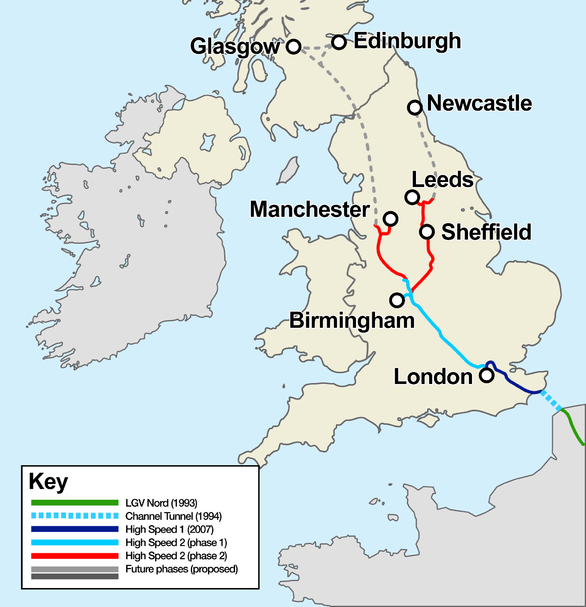 In September, KPMG produced a report that estimated the overall benefit to the UK economy would be a boost to growth of 0.8%, which would benefit many businesses and communities. The British Chambers of Commerce said:
In September, KPMG produced a report that estimated the overall benefit to the UK economy would be a boost to growth of 0.8%, which would benefit many businesses and communities. The British Chambers of Commerce said:
Business communities in dozens of cities and towns, from many parts of the UK, remain strongly supportive of HS2.
The railway network is also approaching full capacity and this is one of the reasons why HS2 has been proposed. A government source said:
We need to do something because our railways are nearly full, but the alternative to HS2 is a patch and mend job that would cause 14 years of gridlock, hellish journeys and rail replacement buses … The three main routes to the north would be crippled and the economy would be damaged.
However, this report has faced criticism, in particular because it ignored a variety of supply-side constraints and because they argue it would be more effective to simply update the existing network.  However, a new government-commissioned report has suggested that this alternative to HS2 would involve 14 years of weekend route closures and much longer journey times. However, those in favour of updating existing routes have said that this new report commissioned by the government is ‘a complete fabrication’. Hilary Wharf of the HS2 Action Alliance commented:
However, a new government-commissioned report has suggested that this alternative to HS2 would involve 14 years of weekend route closures and much longer journey times. However, those in favour of updating existing routes have said that this new report commissioned by the government is ‘a complete fabrication’. Hilary Wharf of the HS2 Action Alliance commented:
This government-funded report is a complete fabrication. The main alternative to HS2 involves longer trains and reduced first-class capacity to provide more standard class seats…No work is required at Euston to deliver the necessary capacity increase. Work is only required at three locations on the WCML [West Coast Main Line], and this is comparable to the work being carried out on the route at present.
The debate regarding HS2 will continue for the time being and it is just another area that is fuelling the political playing field. Whatever is done, the rail network certainly requires investment, whether it is through HS2 or upgrades to the existing routes. The following reports and articles consider the latest developments and controversy regarding HS2.
Reports
HS2 Cost and Risk model Report: A report to Government by HS2 ltd HS2 Ltd March 2012
High Speed 2 (HS2) Limited: HS2 Regional Economic Impacts KPMG September 2013
Draft Environmental Statement: Phase One: Engine for Growth HS2 May 2013
Updated Economic Case for HS2 HS2 August 2012
Articles
HS2 alternative ‘would mean years of rail disruption’ BBC News (28/10/13)
Alternative to HS2 would see Britain suffer 14 years of rail misery, says Coalition Independent, Nigel Morris (28/10/13)
HS2 alternatives could require 14 years of weekend rail closures The Guardian, Rajeev Syal (28/10/13)
Passengers ‘face 14 years of chaos if HS2 is derailed’: ‘Unattractive’ package of closures would be needed to expand capacity if Labour withdraws support Mail Online, Jason Groves (28/10/13)
HS2: Labour to examine cheaper rival plan The Telegraph, Tim Ross and Andrew Gilligan (27/10/13)
Britain’s railways have become mere outposts of other nations’ empires The Guardian, John Harris (28/10/13)
’Years of delays’ if government backs down on HS2 rail project Financial Times, Kiran Stacey and Brian Gloom (28/10/13)
Questions
- What is a cost-benefit analysis? Explain the steps that are involved in any cost-benefit analysis.
- Conduct a cost-benefit analysis for HS2. Ensure that you differentiate between costs and benefits and between private and social concepts.
- How can we measure the costs and benefits of HS2?
- Explain how HS2 is expected to boost economic growth. Use the AD/AS model to illustrate this.
- To what extent is there likely to be a multiplier effect from HS2? Is it likely to benefit the whole economy or just those areas where the route lies?
- Conduct a cost-benefit analysis for the alternative suggestion. Which do you think is likely to be more feasible? Explain your answer.
- How will improvements to the rail network or the investment of HS2 benefit businesses in the UK economy?
 In many parts of the world, life in the oceans is dying out. The term ‘dead zones’ is used to describe seas that are devoid of marine life. And these zones are growing in size and number.
In many parts of the world, life in the oceans is dying out. The term ‘dead zones’ is used to describe seas that are devoid of marine life. And these zones are growing in size and number.
It’s not just the decline in fish and other marine species that’s worrying environmentalists and many others; it’s a growth in rubbish. Part of this is caused by natural disasters, such as the 2011 Tsunami in Japan that washed huge amounts of debris into the Pacific Ocean. But much of it is caused by rubbish carried down rivers and into the seas, or rubbish jettisoned from ships. The problem is particularly acute in areas of the oceans where currents circulate the rubbish into huge rubbish dumps. There are two such areas either side of Hawaii in the Pacific. Both are vast.
The first article below tells the tale of Newcastle (Australia) yachtsman Ivan Macfadyen. He completed the 2013 Melbourne to Osaka double handed yacht race earlier this year as skipper of his yacht Funnelweb and then went on to bring the yacht home to Australia via America and race the famous Trans-Pac Yacht Race from Los Angeles to Hawaii along the way.
Exactly 10 years before, when [he] had sailed exactly the same course from Melbourne to Osaka, all he’d had to do to catch a fish from the ocean between Brisbane and Japan was throw out a baited line.
“There was not one of the 28 days on that portion of the trip when we didn’t catch a good-sized fish to cook up and eat with some rice,” Macfadyen recalled. But this time, on that whole long leg of sea journey, the total catch was two. No fish. No birds. Hardly a sign of life at all.
After reaching Osaka in Japan, they sailed on to San Francisco via Hawaii.
“After we left Japan, it felt as if the ocean itself was dead,” Macfadyen said. “We hardly saw any living things. We saw one whale, sort of rolling helplessly on the surface with what looked like a big tumour on its head. It was pretty sickening.”
“I’ve done a lot of miles on the ocean in my life and I’m used to seeing turtles, dolphins, sharks and big flurries of feeding birds. But this time, for 3000 nautical miles there was nothing alive to be seen.”
In place of the missing life was garbage in astounding volumes.
As economists, you should readily understand that here we have a case of over-exploited common resources – a Tragedy of the Commons of epic proportions. One ship’s rubbish may make a tiny difference, but when the cost of dumping is near zero and when the oceans are not policed, what is rational for a single ship becomes a disaster when repeated tens of thousands of times by other ships
 Again, overfishing is the result of seemingly rational behaviour by crews of individual fishing boats. But as Economics (8th edition) points out on pages 328–30:
Again, overfishing is the result of seemingly rational behaviour by crews of individual fishing boats. But as Economics (8th edition) points out on pages 328–30:
Common resources are not owned but are available free of charge to anyone. Examples include the air we breathe and the oceans for fishing. Like public goods, they are non-excludable. For example, fishing boats can take as many fish as they are able from the open seas. There is no ‘owner’ of the fish to stop them. As long as there are plentiful stocks of fish, there is no problem.
But as more people fish the seas, so fish stocks are likely to run down. This is where common resources differ from public goods. There is rivalry. One person’s use of a common resource diminishes the amount available for others. This result is an overuse of common resources. This is why fish stocks in many parts of the world are severely depleted, why virgin forests are disappearing (cut down for timber or firewood), why many roads are so congested and why the atmosphere is becoming so polluted (being used as a common ‘dump’ for emissions). In each case, a resource that is freely available is overused. This has become known as the tragedy of the commons.
… When I use a common resource, I am reducing the amount available for others. I am imposing a cost on other people: an external cost. If I am motivated purely by self-interest, I will not take these external costs into account.
Try doing some research to find out just what has been happening to the state of the oceans in recent years.
Articles
The ocean is broken Newcastle Herald (Australia), Greg Ray (18/10/13)
Our Planet Is Exploding With Ocean Dead Zones Business Insider, Dina Spector (26/6/13)
Health of oceans ‘declining fast’ BBC News, Roger Harrabin (3/10/13)
Chaos in the Oceans Huffington Post, Evaggelos Vallianatos (14/10/13)
Ocean Health Suffers from Overfishing, Index Finds Live Science, TechMedia, Douglas Main (16/10/13)
Information
Dead zone (ecology) Wikipedia
Common Fisheries Policy Wikipedia
Reform of the Common Fisheries Policy Fisheries DG, European Commission
Ocean Health Index OHI
Questions
- How does a common resource differ from a public good?
- What is the equilibrium use of a common resource? Demonstrate this with a diagram.
- What is the socially efficient use of a common resource such as a fishing ground?
- In what ways have modern ‘industrial’ methods of fishing compounded the problem of the overuse of fishing grounds?
- What criteria, other than social efficiency, could be used to determine the optimal use of a common resource?
- Explain how the Common Fisheries Policy of the EU works. Are there any lessons that can be learned by other groups of countries from the experience of the CFP?
- Are there any ‘good news’ stories about the state of any of the oceans? If so, to what extent are they the result of deliberate human action?
- To what extent is the Internet a common resource?
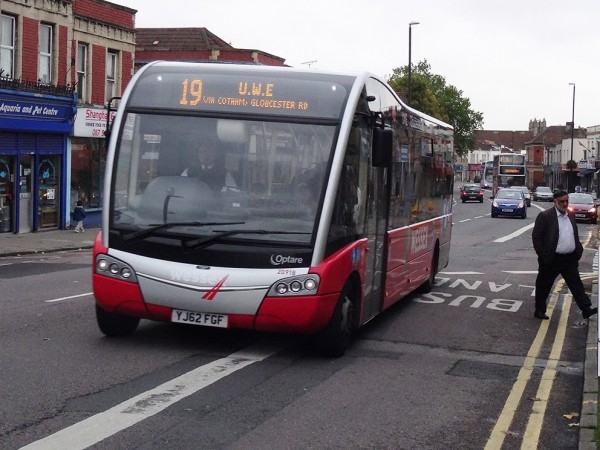 Demand and supply analysis can be applied to a multitude of markets. When there is a disequilibrium in a market, prices will tend to adjust to eliminate any shortage or surplus. But, what of road space? There is a demand and a supply of road space and when there are too many cars for the road space available, congestion is the consequence.
Demand and supply analysis can be applied to a multitude of markets. When there is a disequilibrium in a market, prices will tend to adjust to eliminate any shortage or surplus. But, what of road space? There is a demand and a supply of road space and when there are too many cars for the road space available, congestion is the consequence.
When an additional car enters the road network, there is a cost and a benefit to the driver. However, there are not only costs/benefits to the driver, but there are also costs/benefits to other road-users. When one car drives on the M25 it adds to the number of cars on the road. Once we reach the point where there are too many cars given the road space and thus the flow of cars per minute begins to fall, congestion starts to build up. There is a negative externality involved here – the actions of one person (the driver) impose an additional cost on other drivers (the congestion). It takes every other road user a little bit of extra time to get from A to B the more cars there are on the road.
Congestion is a problem in many parts of the country and various solutions have been suggested. Policies to reduce demand will help the congestion problem by reducing the number of cars on the road. Numerous strategies have been tried, such as restrictions on parking; improvements in public transport; an integrated transport policy; higher parking charges; work place parking levies; higher taxes on petrol, higher car taxes and congestion charging schemes.
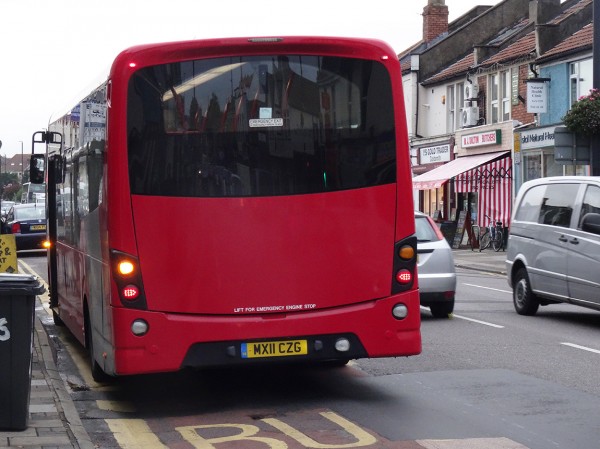 Alternatively, building more roads will directly increase the supply of road space, but this can (and has) simply led to more cars using the additional road space and thus the problem of congestion remains. Bus/taxi lanes are in use across the country and allow the users of public transport to benefit from faster journey times, thus encouraging them to forgo their cars and use buses. However, does this add to the congestion for other people?
Alternatively, building more roads will directly increase the supply of road space, but this can (and has) simply led to more cars using the additional road space and thus the problem of congestion remains. Bus/taxi lanes are in use across the country and allow the users of public transport to benefit from faster journey times, thus encouraging them to forgo their cars and use buses. However, does this add to the congestion for other people?
In Liverpool, a nine month trial is taking place, where bus lanes will be removed to find out if they have a positive effect on reducing congestion. By increasing the amount of road space available to all road users, Liverpool City Council will be able to see if directly increasing the supply of road space will help to meet the existing demand. The possibility, however, is that by increasing the supply of road space, more individuals will choose to use their cars, thus fuelling demand. Many argue that this trial is a step backwards and will add to congestion, reduce the appeal of travelling by bus and impose further costs on the environment. The following articles consider the debate surrounding congestion.
Liverpool City Council will scrap bus lanes for nine months BBC News (27/9/13)
Liverpool bus lanes plan criticised by government Liverpool Daily Post (9/10/13)
Calls for single 30% income tax rate BBC News (21/5/12)
Liverpool scraps bus lanes in trial BBC News (including video) (21/10/13)
Government warning over Liverpool council plans to axe bus lanes in the city Liverpool Echo (9/10/13)
Questions
- Explain why congestion is a negative externality. What other externalities exist with regard to car usage?
- Using a diagram, show the point at which congestion occurs and explain why there is a difference between the marginal private and marginal social cost.
- What will happen to the difference between the marginal private and social cost curves before and after congestion sets in?
- Think about the different solutions to the problem of congestion. In each case, explain whether it is a demand-side or supply-side solution and how it will aim to combat congestion. You should also consider whether it is a short or long term solution and how feasible it actually is.
- How will the abolition of bus lanes aim to reduce congestion?
- There are supporters for bus lanes and supporters for the abolition of them. Justify the arguments on each side of the debate. You should consider the wider implications as well as the impact on congestion.
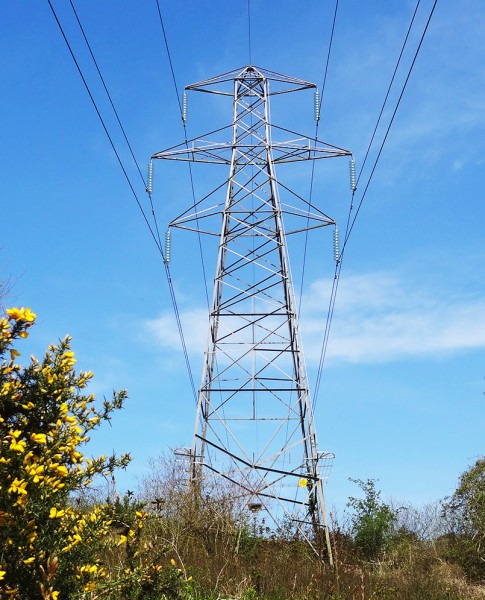 The cost of living is a contentious issue and is likely to form a key part of the political debate for the next few years. This debate has been fuelled by the latest announcement by SSE of an average rise in consumer energy bills of 8.2%, meaning that an average dual-fuel customer would see its bill rise by £106. With this increase, the expectation is that the other big energy companies will follow suit with their own price rises.
The cost of living is a contentious issue and is likely to form a key part of the political debate for the next few years. This debate has been fuelled by the latest announcement by SSE of an average rise in consumer energy bills of 8.2%, meaning that an average dual-fuel customer would see its bill rise by £106. With this increase, the expectation is that the other big energy companies will follow suit with their own price rises.
Energy prices are made up of numerous factors, including wholesale prices, investment in infrastructure and innovation, together with government green energy taxes. SSE has put their price hike down to an increase in wholesale prices, but has also passed part of the blame onto the government by suggesting that the price hikes are required to offset the government’s energy taxes. Will Morris, from SSE said:
We’re sorry we have to do this…We’ve done as much as we could to keep prices down, but the reality is that buying wholesale energy in global markets, delivering it to customers’ homes, and government-imposed levies collected through bills – endorsed by all the major parties – all cost more than they did last year.
The price hike has been met with outrage from customers and the government and has provided Ed Miliband with further ammunition against the Coalition’s policies. However, even this announcement has yet to provide the support for Labour’s plans to freeze energy prices, as discussed in the blog Miliband’s freeze.  Customers with other energy companies are likely to see similar price rises in the coming months, as SSE’s announcement is only the first of many. A key question is how will the country provide the funding for much needed investment in the energy sector? The funds of the government are certainly not going to be available to provide investment, so the job must pass to the energy companies and in turn the consumers. It is this that is given as a key reason for the price rises.
Customers with other energy companies are likely to see similar price rises in the coming months, as SSE’s announcement is only the first of many. A key question is how will the country provide the funding for much needed investment in the energy sector? The funds of the government are certainly not going to be available to provide investment, so the job must pass to the energy companies and in turn the consumers. It is this that is given as a key reason for the price rises.
Investment in the energy infrastructure is essential for the British economy, especially given the lack of investment that we have seen over successive governments – both Labour and Conservative. Furthermore, the government’s green targets are essential and taxation is a key mechanism to meet them. Labour has been criticized for its plans to freeze energy prices, which may jeopardise these targets. The political playing field is always fraught with controversy and it seems that energy prices and thus the cost of living will remain at the centre of it for many months.
 More energy price rises expected after SSE increase BBC News (10/10/13)
More energy price rises expected after SSE increase BBC News (10/10/13)
SSE retail boss blames government for energy price rise The Telegraph, Rebecca Clancy (10/10/13)
A better way to take the heat out of energy prices The Telegraph (11/10/13)
SSE energy price rise stokes political row Financial Times, John Aglionby and Guy Chazan (10/10/13)
Ed Miliband condemns ‘rip-off’ energy firms after SSE 8% price rise The Guardian, Terry Macalister, Angela Monaghan and Rowena Mason (28/9/12)
Coalition parties split over energy companies’ green obligations Independent, Nigel Morris (11/10/13)
Energy price rise: David Cameron defends green subsidies The Guardian, Rowena Mason (10/10/13)
‘Find better deals’ users urged as energy bills soar Daily Echo (11/10/13)
Energy Minister in row over cost of taxes Sky News (10/10/13)
SSE energy price rise ‘a bitter pill for customers’ The Guardian, Angela Monaghan (10/10/13)
Energy firm hikes prices, fuels political row Associated Press (10/10/13)
Only full-scale reform of our energy market will prevent endless price rises The Observer, Phillip Lee (27/10/13)
Questions
- In what market structure would you place the energy sector?
- Explain how green taxes push up energy bills? Use a diagram to support your answer.
- Consider the energy bill of an average household. Using your knowledge and the articles above, allocate the percentage of that bill that is derived from wholesale prices, green taxes, investment in infrastructure and any other factors. Which are the key factors that have risen, which has forced SSE (and others) to push up prices?
- Why is investment in energy infrastructure and new forms of fuel essential? How might such investment affect future prices?
- Why has Labour’s proposed 20-month price freeze been criticised?
- What has happened to energy prices over the past 20 years?
- Is there now a call for more government regulation in the energy sector to allay fears of rises in the cost of living adversely affecting the poorest households?
 However, it is hard to see how, even taking into account all three of these possible sources of cost increases, the scale of price increases can be justified.
However, it is hard to see how, even taking into account all three of these possible sources of cost increases, the scale of price increases can be justified. This is an argument for making the wholesale market more competitive and for stopping the by-passing of this market by producing arms of companies selling directly to their retailing arms. What the companies are being accused of is an abuse of market power and possibly of colluding with each other, at least tacitly, to support the continuation of such a practice.
This is an argument for making the wholesale market more competitive and for stopping the by-passing of this market by producing arms of companies selling directly to their retailing arms. What the companies are being accused of is an abuse of market power and possibly of colluding with each other, at least tacitly, to support the continuation of such a practice. Energy bosses blame high bills on wholesale prices Channel 4 News, Gary Gibbon (29/10/13)
Energy bosses blame high bills on wholesale prices Channel 4 News, Gary Gibbon (29/10/13) Why are energy bosses being questioned? BBC News, Stephanie McGovern (29/10/13)
Why are energy bosses being questioned? BBC News, Stephanie McGovern (29/10/13) Key questions Big Six energy companies must answer The Telegraph, Ann Robinson (29/10/13)
Key questions Big Six energy companies must answer The Telegraph, Ann Robinson (29/10/13) Energy bosses offer excuses for prices rises The Telegraph (29/10/13)
Energy bosses offer excuses for prices rises The Telegraph (29/10/13) Energy bosses face MPs over price rises BBC News, John Moylan (29/10/13)
Energy bosses face MPs over price rises BBC News, John Moylan (29/10/13) Energy boss ‘can’t explain’ competitors’ price hikes The Telegraph (29/10/13)
Energy boss ‘can’t explain’ competitors’ price hikes The Telegraph (29/10/13) Ovo boss: Competition Commission would take too long BBC News (30/10/13)
Ovo boss: Competition Commission would take too long BBC News (30/10/13) Dale Vince: Energy market is ‘dysfunctional’ BBC Today Programme (30/10/13)
Dale Vince: Energy market is ‘dysfunctional’ BBC Today Programme (30/10/13) Tony Cocker: Public mistrust energy industry BBC Today Programme (30/10/13)
Tony Cocker: Public mistrust energy industry BBC Today Programme (30/10/13) Ed Davey: Energy deals not just for ‘internet savvy’ BBC Today Programme (31/10/13)
Ed Davey: Energy deals not just for ‘internet savvy’ BBC Today Programme (31/10/13)








